SSZTCZ7 September 2023 IWRL6432
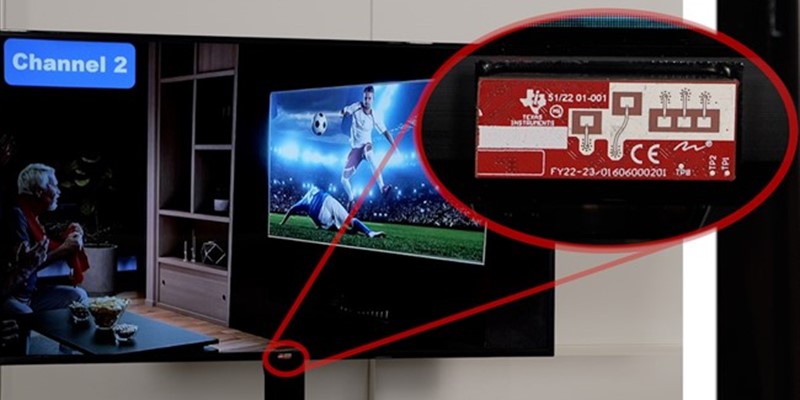
Think about all of the times that a TV is left on with no one watching; given rising energy costs, it would help if a TV could sense that no one is present and turn itself off. A TV that detects the distance and direction in which people are sitting and uses this information to optimize image quality, while also directing sound toward them for best audio, would enhance the viewer experience. A monitor that could sense a person approaching and start the login process would result in faster service. A TV that can sense the number of people in the room when a particular show is broadcast would give service and content providers better data. A monitor that learns when users walk away from their workspace and logs them off immediately would tighten security processes.
60-GHz radar sensors make these enhancements possible. With shorter wavelengths and a higher number of transmit and receive antennas, 60-GHz radar sensors can accurately detect the presence, motion and location of four or more people in a room. Millimeter-wave (mmWave) radar provides capabilities such as monitoring multiple zones for localizing presence and tracking movement through each zone.
Advancements in silicon design and process technologies now allow the integration of radars with on-chip hardware accelerators, signal processors and memory, beyond just offering a radio-frequency front end. This type of architecture has multiple benefits; overall, it simplifies radar placement in TVs. Additionally, on-chip signal-processors enable the radar to detect motion without involving external processors, (thus saving signal routing and reducing resource requirements from other systems), and on-chip signal processing also helps with latency associated with waking up the main processor.
It is possible to use radar data to extract features in real time, which machine learning algorithms can process to then develop functions such as classifying motion. Differentiating the movements of objects such as vacuum cleaners, fans and pets from humans helps make intelligent determinations and potentially reduce the number of false detections, saving unnecessary wakeup and processing calls to other functions.
By accurately measuring the range, velocity and angle of arrivals, 60-GHz radar sensors are capable of providing advanced features such as gesture recognition for a contactless human machine interface (HMI). Radars can recognize multiple hand gestures such as a swipe from right to left or vice versa to turn a TV on, change channels, and raise or lower the volume (Figure 1).
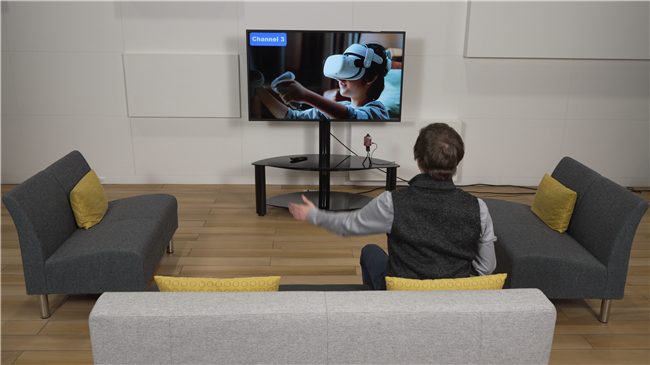 Figure 1 Using hand gestures to change
TV channels
(see video)
Figure 1 Using hand gestures to change
TV channels
(see video)
With shorter signal wavelengths and precise measurements, 60-GHz radar can detect subtle body movements such as breathing, thus enabling contactless measurements of breathing rates and even sleep monitoring for advanced functionality (Figure 2).
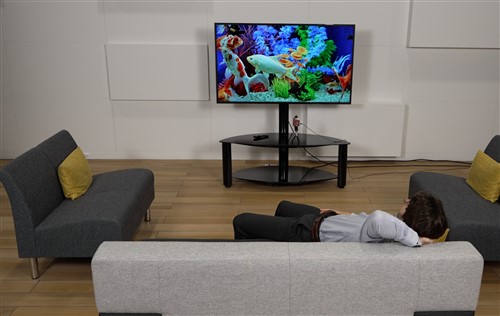
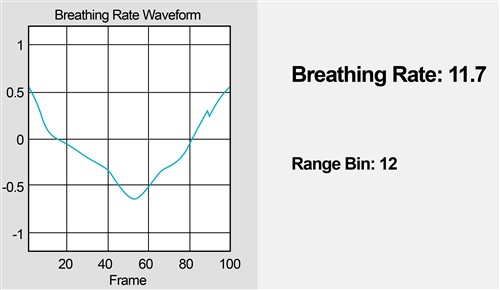 Figure 2 Using radar to measure
breathing rates
Figure 2 Using radar to measure
breathing ratesTo maximize the viewable area and larger screen sizes (a constant challenge), newer designs for TVs and monitors are pushing bezel widths to ultra-thin dimensions. 60-GHz radars such as TI’s IWRL6432 are addressing this challenge with smaller device sizes, lower cost, and the ability to place multiple receive and transmit antennas in a small area, providing the enhanced performance and resolution needed for the intended functionality. Other technologies such as ultra-wideband and 24-GHz devices cannot support this level of performance because of limitations in number of antennas due to longer wavelengths.
mmWave radars are generally offered in package technologies where the antennas are etched on the package (also known as antenna on package), which simplifies the board design; however, the flexibility in antenna placement becomes limited because the design is fixed. To address the challenges associated with different design requirements, the IWRL6432 radar sensor is offered in a small package where it is possible to etch the antennas on a low-cost printed circuit board (see Figure 3), thus giving you flexibility to customize your designs.
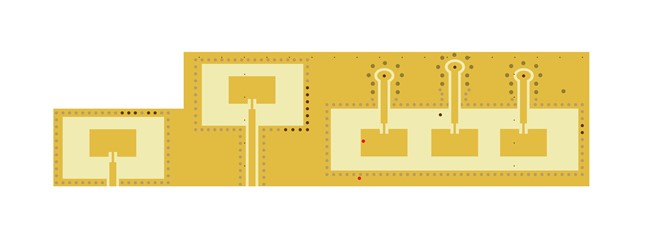 Figure 3 Example reference antenna
design for the IWRL6432
Figure 3 Example reference antenna
design for the IWRL6432Most applications require mmWave radars to stay on all of the time in order to monitor and detect action, while putting the rest of the product to sleep in order to conserve power. TI designed the IWRL6432 radar sensor to have ultra-low power, with the ability to detect presence with as little as 2 mW of power consumption. You can also configure the device to minimize power based on the target application. For example, you can put the device into deep sleep mode for low duty-cycle applications when you need to achieve higher power efficiencies. See Figure 4 for an example of a highly-integrated radar design.
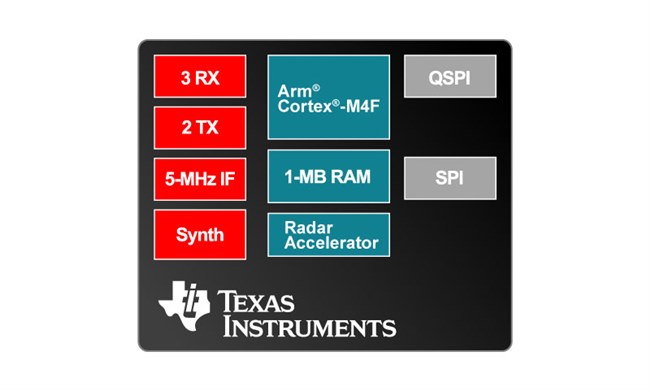 Figure 4 Block diagram of the
IWRL6432
Figure 4 Block diagram of the
IWRL6432Conclusion
Technological advancements have made it possible to implement 60-GHz radar sensors in consumer and personal electronics applications like TVs and desktop monitors. Radar sensors such as the IWRL6432 enable intelligent sensing in these products for enhanced functionality, including:
- Contextual presence and motion detection for smart decision-making.
- Gesture recognition for HMI.
- Vital signs for breathing and sleep monitoring.
- Ultra-low power consumption to monitor presence and motion, while turning off other product functionality when not in use.
- Low device and bill-of-materials cost, a compact solution size, and configurable antenna designs.
Additional resources
- Download these technical white papers:
- Read the application brief, “Low Power mmWave Radar Solution Enables New Functionality in Battery Powered Proximity Sensing Products.”
- Order the IWRL6432BOOST BoosterPack™ plug-in module.
- Check out how the IWRL6432 family of radar sensors can be used in personal electronics.